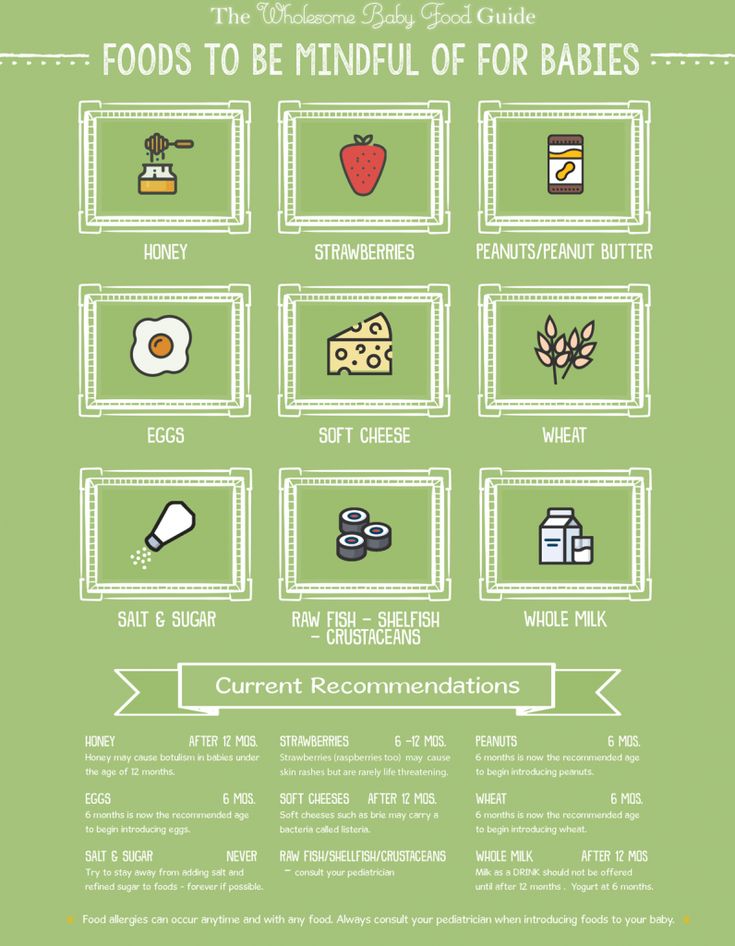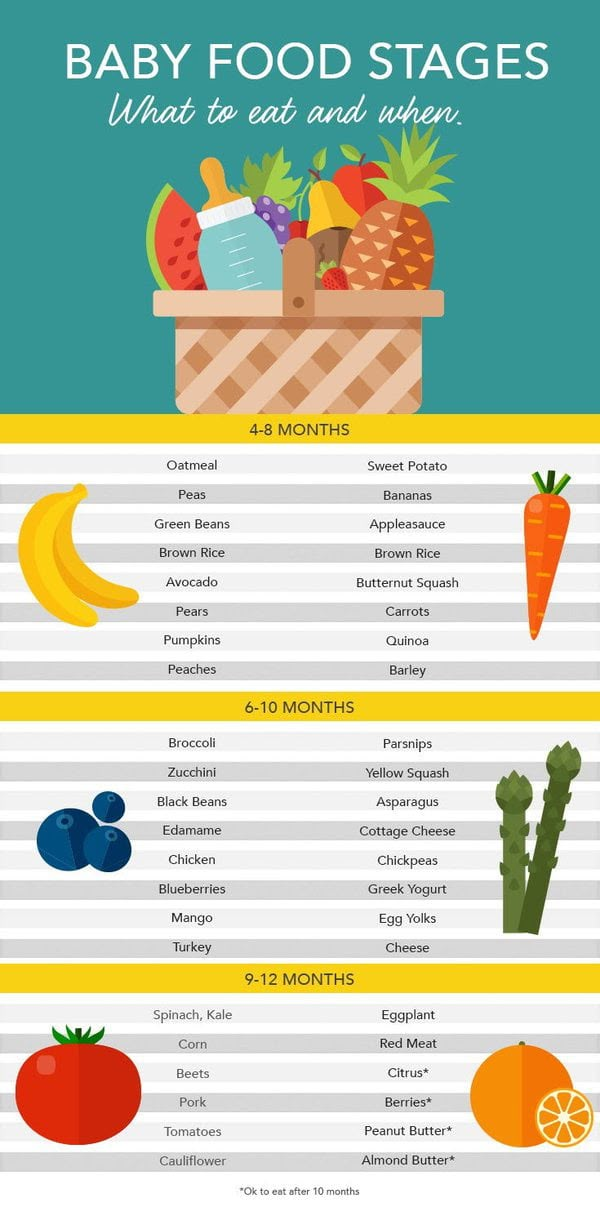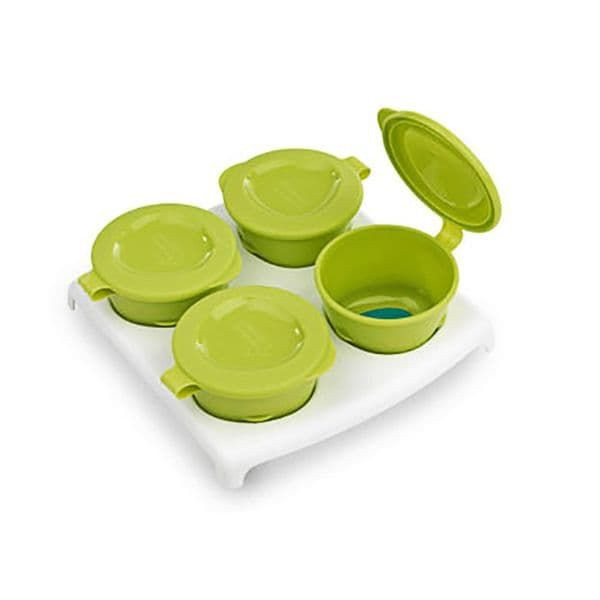When will my baby go longer between feeds
Breastfeeding after one month: What to expect
Do you know when your breast milk supply settles down? Or how your baby’s breastfeeding frequency and duration change as he gets bigger and more active? Find out in our guide to breastfeeding after one month
Share this content
Congratulations – you’ve made it through the first crazy month of breastfeeding. Your breast milk is now fully mature,1 your supply is beginning to calm down, and your breasts won’t leak as much, or at all, any more. Don’t worry, you’re not losing your supply – your breasts are just getting more efficient at making and storing milk.2 At six weeks, you’ll start seeing your baby’s first gorgeous gummy smiles, and by two months you’ll have 500 to 600 feeds under your belt. Hopefully any latch issues will be resolved, and now it’s a case of maintaining breastfeeding and enjoying the convenience and ongoing health benefits.
When does breastfeeding frequency slow down?
The range of ‘normal’ breastfeeding for babies aged one to six months is wide – some only feed four times in 24 hours, while others have 13 feeds a day.3
“After he’s about one month old, your baby will begin taking bigger volumes of milk at a feed and may start to go longer between feeds,” explains internationally renowned lactation consultant Cathy Garbin. “His stomach is growing so he can take larger feeds, plus your mature milk keeps him fuller for longer.”
Feeds can last anything from 12 minutes to nearer an hour – there really is that much variability between babies!3 But if your baby is gaining weight and has a feeding pattern that fits into these ranges, you have no cause for concern.
Amazingly however, no matter how often your baby feeds, he’ll consume roughly the same quantity of milk per day at one month old as he will at six months, when you start introducing solid foods.4
“Having said that, you’ll invariably get some days when he wants to feed a bit more or less, especially if he’s not feeling well, and you should just go with it,” says Cathy.
Does my baby really only need breast milk for the first six months?
Yes. Breast milk provides your baby with everything he needs for the first six months of life – if he’s exclusively breastfed, he doesn’t even need water!5 In fact, his digestive system is not able to cope with solid foods until around six months, and he won’t be able to drink cow’s milk until he’s a year old.
Breastfeeding throughout this stage also prepares your baby for the exciting milestones ahead. It exercises his mouth muscles and helps develop his jaw and align his teeth,6,7 which are all important for eating and talking. And because the flavour of your breast milk can be influenced by what you eat or drink, it means your baby can experience new tastes before he even starts solids.8
Not only that but if he gets ill, your body will produce antibodies that go into your breast milk to help fight off the infection.9 This means it will continue to protect him as he grows and gets more active over the months to come.
Once you hit your stride, carrying on breastfeeding is also incredibly convenient, as Claudia, mum of two, UK, discovered: “Not having to sterilise loads of bottles, make up formula, cart it all around, then heat it up, made breastfeeding the easy option – especially as my babies got a bit older and we went out more.”
When will my breastfed baby sleep through the night?
It’s normal for all babies to wake during the night. The majority of one- to six-month-old babies consume a fifth of their daily milk intake at night, so these feeds are important to ensure they get enough calories.3
“Really, it depends on what you call sleeping through the night,” says Cathy. “If your baby goes to bed at midnight and wakes up at 05:00, some people call that sleeping through and it’s certainly better than waking every two hours! I’ve known breastfed babies who’ve gone to bed at 19:00 and woken at 07:00 from six weeks, but plenty of others continue to wake frequently. Every child is different.”
Every child is different.”
A study of more than 700 babies in Wales showed that almost 80% woke at least once a night between six and 12 months, and 25% woke three times or more. There was no difference in frequency between breastfed or formula-fed babies.10
So, if you’re going to be waking up anyway, at least breastfeeding is a convenient option! As Minette, mum of two, Australia, agrees: “At night you barely have to wake up – just let your body and baby go on automatic pilot. No planning, measuring or sterilising. It’s all ready and at the right temperature in your boob. Perfect for me.”
My baby has started waking up more – is he hungry?
At around four months, your baby’s sleep patterns may change as he starts to cycle between periods of deep and light sleep, just like an adult. As a result, he may start waking more frequently at night. “At this four-month stage you may be dealing with a sleep issue not a feeding issue,” says Cathy. “It can wear you out, but try to go with the flow and ride through it. ”
”
Some people refer to this as the ‘four-month sleep regression’ but a more apt word is progression. While it may feel like a step back, your baby is approaching an important developmental phase. He’s learning rapidly, becoming more aware of the world, gaining better depth-perception, and perhaps starting to experience separation anxiety. Crying for you when he wakes, feeding and being close to you is a way of seeking reassurance.11–13
Don’t be tempted to give a ‘top-up’ of formula or introduce solids early in a bid to make your baby sleep longer. Your breast milk contains hormones that cause drowsiness and help both of you relax. And studies show mums who breastfeed actually get more sleep each night than those using formula or mixed feeding.14
How will teething affect breastfeeding?
Teething often starts from about four months. Your baby might become fussy and pull off your breast, crying with discomfort, if his gums are sore, which can be frustrating.
However, breastfeeding can also be soothing. A study showed babies who are breastfed during immunisations cry less and recover more quickly from the pain,15 and this calming effect could also help your baby while he’s teething.
An unwanted side effect may be that your baby starts to use your breast to try out his new teeth.“Occasionally some babies will have a little game and bite their mum playfully. If this is about to happen, you might notice a subtle change in your baby during the feed – he’ll have to move his tongue out of the way before he bites,” says Cathy. “It’s not usually a big problem and might only happen for a couple of feeds. Just stop the feed, tell him gently that it’s not good to bite, and he’ll soon cotton on.”
How can I continue breastfeeding if I’m away from my baby?
There may be occasions while you’re still exclusively breastfeeding during the first six months when you need to leave your baby for a couple of hours – or even longer if you have to return to work or go away for a day or two.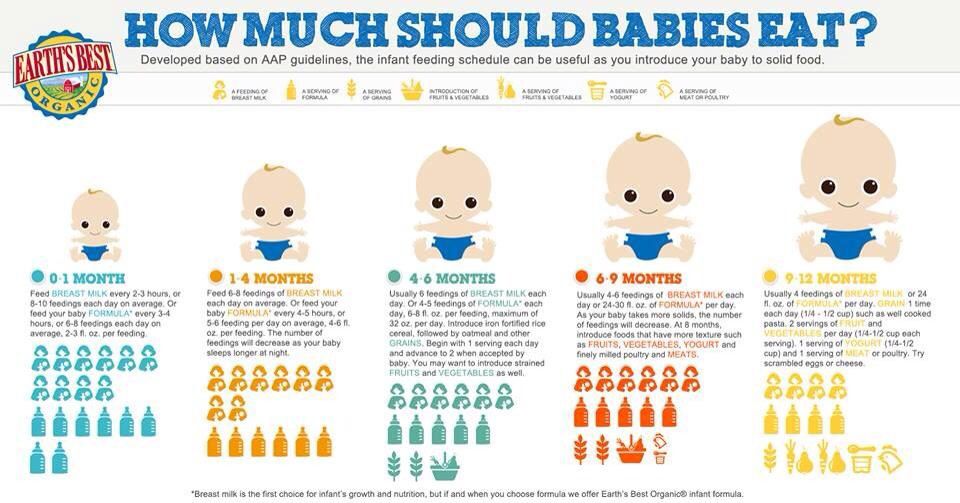
Don’t feel like you have to give up breastfeeding at this point. You can still continue giving your child the benefits of breast milk by pumping milk that can be fed to him while you’re not there, as Cathy explains:
“Express milk for a couple of days beforehand, taking small quantities – maybe 40 to 60 ml (1.4 to 2.1 fl oz) at a time – so you have a bank ready for whoever will be caring for your baby. By taking small amounts, you won’t affect your milk supply.
“If you’re returning to work, talk to your employer to get a plan in place. Many mums breastfeed their baby at night and do the first and last feeds. Then they express at lunchtime to ease any discomfort and provide milk for the next day.
“It’s usually much easier than people think it’s going to be, and many workplaces are set up for it these days,” she adds. “Breast pumps are efficient and will help you manage this juggling act easily.”
Natalie, mum of one, US, describes her routine: “I feed Dylan as soon as he wakes, and sometimes again before I go to work to get my supply going and have that connection. I pump twice at work for the next day (he has two bottles of breast milk while I’m at work) and then hurry home for his evening feed. At the weekends, I don’t pump and he goes back to just breastfeeding.”
I pump twice at work for the next day (he has two bottles of breast milk while I’m at work) and then hurry home for his evening feed. At the weekends, I don’t pump and he goes back to just breastfeeding.”
Can I continue breastfeeding after introducing solids?
When your baby is showing an interest in food and sitting up unsupported, at around six months, he’s ready for you to start introducing solid foods. However, this doesn’t have to be the end of breastfeeding, as Cathy explains: “Your baby’s stores of iron, built up during pregnancy, have been used by six months and he needs to start getting more,” she says.
“Introduce foods around this time, but remember breastfeeding will remain more important as a source of calories and nutrients until your baby is around eight to nine months old. He’ll be eating a lot more food by that point, but you may still be giving breastfeeds four to five times a day, depending on your baby. By the time he gets to 12 months, you could be breastfeeding anywhere between two and six times a day. All babies are individuals and he could still be getting half his calories from breast milk.”
All babies are individuals and he could still be getting half his calories from breast milk.”
And don’t forget, your breast milk can also be added to your baby’s first solid foods, such as cereals and purees, so he can experience a familiar flavour at meals. If possible, use it freshly expressed (not defrosted) and mix in just before serving, so the live components and nutrients are not destroyed.16
You may feel social pressure to stop at six months, but the longer you breastfeed or express, the more benefits there are for you both.
How long can I keep breastfeeding for?
“The World Health Organization recommends giving toddlers breast milk alongside solid foods until they turn two and beyond, as it still has a vital role in supporting the immune system,” says Cathy. “It’s also an important way to offer emotional support when they’re feeling overwhelmed or poorly.”
At eight months old, you may be giving your baby four feeds a day but after he’s a year old, you could be feeding as little as twice a day. You can find a pattern that works for you both and fits into your lifestyle, as Jane, mum of two, US, found. She breastfed her children until they were around the age of two: “I’d feed when I was around in the evenings and at weekends, when they wanted to feel close to me,” she says. “It was a great help when they were sick, and my go-to method of comforting.”
You can find a pattern that works for you both and fits into your lifestyle, as Jane, mum of two, US, found. She breastfed her children until they were around the age of two: “I’d feed when I was around in the evenings and at weekends, when they wanted to feel close to me,” she says. “It was a great help when they were sick, and my go-to method of comforting.”
“As my son grew older and became more adventurous, he’d often come back to me to nurse, as if to ground him and allow him to recharge,” remembers Amy, mum of two, Canada. “When he encountered bumps and bruises along the way, breastfeeding was a great comfort to him.”
If you breastfeed your baby into toddlerhood, other people may comment that he’ll never want to stop. But, given the freedom to choose, toddlers often self-wean between the ages of two and four years.17
“I never set out to breastfeed for so long but am still feeding my four-year-old and 22-month-old,” says Susannah, mum of two, UK. “I feed my youngest before and after work and pump during work trips. My eldest has a little comfort feed before bed or when she’s upset – it’s a great way to reconnect. When I’m exhausted or feeling touched out, I focus on the amazing health benefits and comfort I’m giving them. I’m now planning to follow infant-led weaning and let them stop when they’re ready.”
My eldest has a little comfort feed before bed or when she’s upset – it’s a great way to reconnect. When I’m exhausted or feeling touched out, I focus on the amazing health benefits and comfort I’m giving them. I’m now planning to follow infant-led weaning and let them stop when they’re ready.”
Find out more about what you can expect, along with lots of support and advice, in Breastfeeding challenges after the first month
References
1 Ballard O, Morrow AL. Human milk composition: nutrients and bioactive factors. Pediatr Clin North Am. 2013;60(1):49-74.
2 Kent JC et al. Principles for maintaining or increasing breast milk production. J Obstet, Gynecol, & Neonatal Nurs. 2012;41(1):114-21.
3 Kent JC et al. Volume and frequency of breastfeedings and fat content of breast milk throughout the day. Pediatrics. 2006;117(3):e387-395.
4 Kent JC et al. Longitudinal changes in breastfeeding patterns from 1 to 6 months of lactation. Breast Med. 2013;8(4):401-407.
5 Almroth S, Bidinger PD. No need for water supplementation for exclusively breast-fed infants under hot and arid conditions. Trans R Soc Trop Med Hyg. 1990;84(4):602-604.
6 Victora CG et al. Breastfeeding in the 21st century: epidemiology, mechanisms, and lifelong effect. Lancet. 2016;387(10017):475-490.
7 Peres KG et al. Effect of breastfeeding on malocclusions: a systematic review and meta‐analysis. Acta Paediatr. 2015;104(S467):54-61.
8 Mennella JA, Beauchamp GK. Maternal diet alters the sensory qualities of human milk and the nursling's behavior. Pediatrics. 1991;88(4):737-744.
9 Hassiotou F et al. Maternal and infant infections stimulate a rapid leukocyte response in breastmilk. Clin Transl immunology. 2013;2(4).
10 Brown A, Harries V. Infant sleep and night feeding patterns during later infancy: Association with breastfeeding frequency, daytime complementary food intake, and infant weight. Breast Med. 2015;10(5):246-252.
11 Infant sleep information source.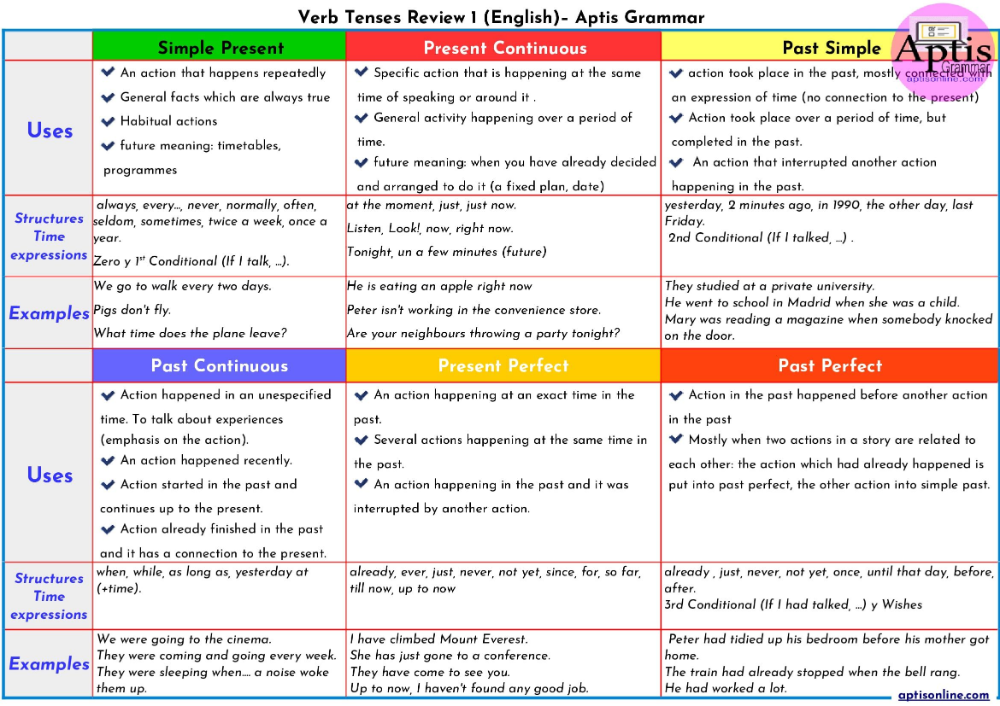 [Internet]. Normal Infant Sleep Development; December 2017 [cited 2018 Feb]
[Internet]. Normal Infant Sleep Development; December 2017 [cited 2018 Feb]
12 Baby sleep science. [Internet]. The-Four-Month-Sleep-Regression-What-is-it-and-What-can-be-Done-About-it. March 2014 [cited 2018 Feb]
13 The Myth Of Baby Sleep Regressions – What’s Really Happening To Your Baby’s Sleep? [Internet]. Pinky Mckay; December 2017 [cited 2018 Feb]
14 Kendall-Tackett K et al. The effect of feeding method on sleep duration, maternal well-being, and postpartum depression. Clinical Lactation. 2011;2(2):22-26.
15) Harrison D et al. Breastfeeding for procedural pain in infants beyond the neonatal period. Cochrane Database Syst Rev. 2014;10.
16 Czank C et al. Retention of the immunological proteins of pasteurized human milk in relation to pasteurizer design and practice. Pediatr Res. 2009;66(4):374.
17 Weaning from the breast. (2004). Paediatr Child Health, 9(4):249–253.
Breastfeeding and Returning to Your Workplace | Nutrition
Many parents have questions about expressing breast milk when returning to their workplace after having a baby. Whether returning to work from maternity leave or starting a new job after having your baby, you may be working from home, at a work site, or some combination of the two. Below you will find common questions with information and resources to help you prepare to return to your workplace. The Office on Women’s Healthexternal icon provides additional information.
Whether returning to work from maternity leave or starting a new job after having your baby, you may be working from home, at a work site, or some combination of the two. Below you will find common questions with information and resources to help you prepare to return to your workplace. The Office on Women’s Healthexternal icon provides additional information.
What are my rights as a breastfeeding employee?
The federal Break Time for Nursing Mothers Provisionexternal icon of the Patient Protection and Affordable Care Act requires employers to support breastfeeding employees by providing:
- A reasonable break time to express breast milk for 1 year after your child’s birth.
- A private, non-bathroom space to express breast milk.
This law applies to most hourly employees and some salaried employees (nonexempt workers) who are covered by the Fair Labor Standards Actexternal icon. Most states also have laws that protect breastfeeding employees.
For breastfeeding people who work in settings with higher risk of potential exposure to COVID-19, such as health care settings, they should wear a mask while breastfeeding or expressing milk in the workplace. Learn more at Care for Breastfeeding People.
Learn more at Care for Breastfeeding People.
How do I talk with my employer about my needs as I return to work?
If you work outside your home, talk with your employer before you return to your workplace about expressing breast milk during work hours. Having this conversation early will help make sure a plan is in place.
Talk with your employer about:
- Where there is a private, non-bathroom space to express breast milk.
- Where breast milk can be stored (eg, refrigerator, insulated cooler).
- Where pump parts can be cleaned.
- What times are best for you during your work schedule for expressing milk.
The timing and length of breaks needed to express milk and clean breast pump parts may change from day to day and over time. It may be helpful to discuss this with your employer since they may not be familiar with the process of expressing milk or cleaning pump equipment.
Some bras and pumps are designed to be used hands-free! This allows you to collect milk for your baby while doing other things.
How should I clean my breast pump kit parts at my workplace?
For best practices on cleaning pump kit parts, visit CDC’s FAQ page on cleaning breast milk pump parts.
What if I don’t have time to wash pump parts or have access to a sink and water to wash parts?
Careful cleaning of your breast pump parts after every use is important to prevent germs from contaminating the milk you feed your baby. Cleaning breast pump parts at work may require creative solutions depending on your workplace. Here are some ways that you might handle these challenges:
- Bring multiple breast pump kits to your workplace so that a clean kit can be used for each pumping session. Take used parts home after work and wash them all at once.
- If you have access to a microwave, rinse parts and then use steam bags made for cleaning breast pump parts. Some pump parts should not be steamed in the microwave, so be sure to check the manufacturer’s instructions.
- Learn how to hand express directly into milk collection containers.

Can I store my pump parts in the refrigerator between pump sessions while at my workplace?
The CDC and most breast pump manufacturers recommend cleaning pump parts after every use to help protect babies from germs.
More information about storing pump parts in the refrigerator between pumping sessions can be found on CDC’s FAQ page on breast pump cleaning.
Where can I store breast milk at my workplace?
- In the refrigerator: Expressed breast milk is a food and may be stored alongside other foods in any refrigerator that is appropriate for food storage.
- In an insulated cooler: You can store and carry freshly expressed milk in an insulated cooler bag with frozen ice packs for up to 24 hours. Once you get home use the milk right away, store it in the refrigerator, or freeze it.
Always label breast milk containers with your name and the date you expressed the milk. You can also label your cooler with your name and contact information.
How can I pump and store breast milk if my work requires travel?
For detailed information about travel, visit Travel Recommendations for Nursing Families
What else might help me continue breastfeeding after returning to work?
- Practice using your pump or hand expressing breast milk before returning to work so you are comfortable with the process.
- Build a supply of frozen breast milk before returning to work.
- Think about how much breast milk you will need to leave at home or at childcare for your baby before your first day back at work.
- Think about how often you will need to pump or express breast milk while at work to have enough for your baby while you are apart.
- Once breastfeeding is going well, practice bottle feeding your breast milk so your baby will be used to a bottle while you are away at work. If your baby is having trouble taking a bottle at first, try having another adult feed your baby with the bottle.
 You can also try different types of bottles and nipples.
You can also try different types of bottles and nipples.
Top of Page
- Break times and spaces to express milkexternal icon
- Helpful tips for pumping breast milkexternal icon
- General breast milk storage
- Breast milk storage at work
- FAQs on breast pump cleaning
- Types of employers that provide breastfeeding support in the workplaceexternal icon
- Traveling with Children | Transportation Security Administration (tsa.gov)external icon
Breastfeeding in the first month: what to expect
Not sure how to establish lactation and increase milk production? If you need help, support, or just want to know what to expect, read our first month breastfeeding advice
Share this information
The first weeks of breastfeeding are a very stressful period. If at times you feel like you can't handle it, know that you are not alone. Feeding your baby all day long is completely natural and helps produce breast milk, but can be quite tiring at times. Be patient, think about yourself and remember: after the first month, when milk production stabilizes, it will become easier.
Be patient, think about yourself and remember: after the first month, when milk production stabilizes, it will become easier.
How often should a baby be breastfed?
Babies are born with a small stomach that grows rapidly with increasing milk production: in the first week it is no larger than an apricot, and after two weeks it is already the size of a large chicken egg. 1.2 Let the child eat as much as he wants and when he wants. This will help him quickly regain the weight lost after birth and grow and develop further.
“Be prepared to feed every two to three hours throughout the day. At night, the intervals between feedings can be longer: three to four or even five hours, says Cathy Garbin, a recognized international expert on breastfeeding. Some eat quickly and are satiated in 15 minutes, while others take an entire hour to feed. Do not compare your breastfeeding regimen with that of other mothers - it is very likely that there will be nothing in common between them.
At each feed, give your baby a full meal from one breast and then offer a second one, but don't worry if the baby doesn't take it. When the baby is full, he lets go of his chest and at the same time looks relaxed and satisfied - so much so that he can immediately fall asleep. The next time you feed, start on the other breast. You can monitor the order of the mammary glands during feeding using a special application.
Why does the child always ask for a breast?
The first month is usually the hardest time to breastfeed. But do not think that because the baby is constantly hungry and asks for a breast almost every 45 minutes, then you do not have enough milk.
In the first month, the baby needs to eat frequently to start and stimulate the mother's milk production. It lays the foundation for a stable milk supply in the future. 3
In addition, we must not forget that the child needs almost constant contact with the mother. The bright light and noise of the surrounding world at first frighten the baby, and only by clinging to his mother, he can calm down.
Sarah, mother of three from the UK, confirms: “Crying is not always a sign of hunger. Sometimes my kids just wanted me to be around and begged for breasts to calm them down. Use a sling. Place the cradle next to the bed. Don't look at the clock. Take advantage of every opportunity to relax. Forget about cleaning. Let those around you take care of you. And not three days, but six weeks at least! Hug your baby, enjoy the comfort - and trust your body."
Do I need to feed my baby on a schedule?
Your baby is still too young for a strict daily routine, so
forget about breastfeeding schedules and focus on his needs.
“Volumes have been written about how to feed a baby on a schedule, but babies don't read or understand books,” Cathy says. - All children are different. Some people can eat on a schedule, but most can't. Most often, over time, the child develops his own schedule.
Some mothers report that their babies are fine with scheduled feedings, but they are probably just the few babies who would eat every four hours anyway.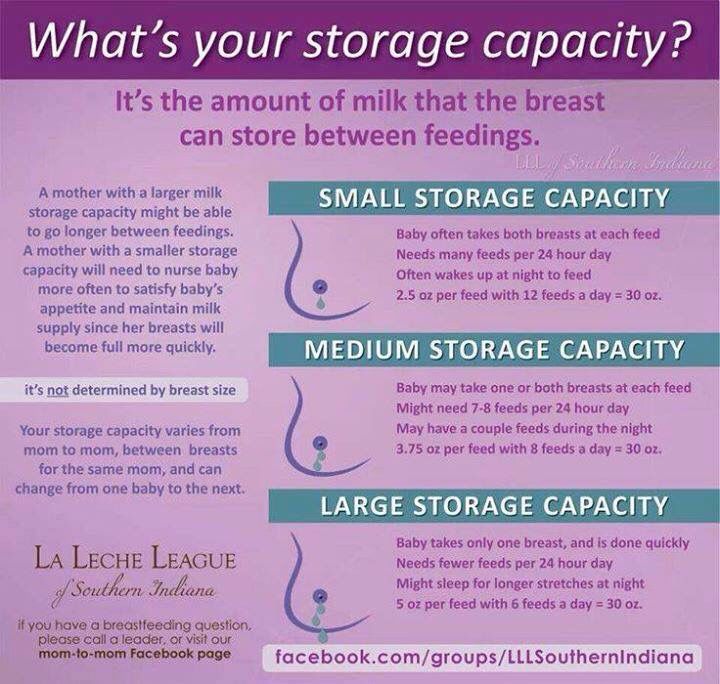 Adults rarely eat and drink the same foods at the same time of day - so why do we expect this from toddlers?
Adults rarely eat and drink the same foods at the same time of day - so why do we expect this from toddlers?
Offer your baby the breast at the first sign of hunger. Crying is already the last stage, so be attentive to early signs: the baby licks his lips, opens his mouth, sucks his fist, turns his head with his mouth open - looking for the breast. 4
What is a "milk flush"?
At the beginning of each feed, a hungry baby actively sucks on the nipple,
thereby stimulating the milk flow reflex - the movement of milk through the milk ducts. 5
“Nipple stimulation triggers the release of the hormone oxytocin,” explains Cathy. “Oxytocin is distributed throughout the body and causes the muscles around the milk-producing glands to contract and the milk ducts to dilate. This stimulates the flow of milk.
If the flushing reflex fails, milk will not come out. This is a hormonal response, and under stress it may not work at all or work poorly.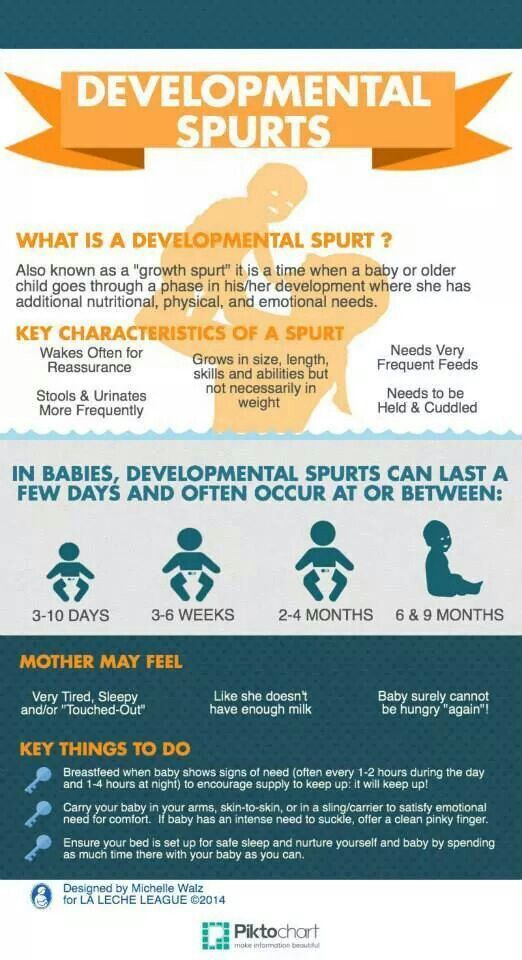 Therefore, it is so important that you feel comfortable and calm when feeding.
Therefore, it is so important that you feel comfortable and calm when feeding.
“Studies show that each mother has a different rhythm of hot flashes during one feed,” Kathy continues, “Oxytocin is a short-acting hormone, it breaks down in just 30-40 seconds after formation. Milk begins to flow, the baby eats, the effect of oxytocin ends, but then a new rush of milk occurs, the baby continues to suckle the breast, and this process is repeated cyclically. That is why, during feeding, the child periodically stops and rests - this is how nature intended.
The flow of milk may be accompanied by a strong sensation of movement or tingling in the chest, although 21% of mothers, according to surveys, do not feel anything at all. 5 Cathy explains: “Many women only feel the first rush of milk. If you do not feel hot flashes, do not worry: since the child eats normally, most likely, you simply do not understand that they are.
How do you know if a baby is getting enough milk?
Since it is impossible to track how much milk a baby eats while breastfeeding, mothers sometimes worry that the baby is malnourished. Trust your child and your body.
Trust your child and your body.
After a rush of milk, the baby usually begins to suckle more slowly. Some mothers clearly hear how the baby swallows, others do not notice it. But one way or another, the child himself will show when he is full - just watch carefully. Many babies make two or three approaches to the breast at one feeding. 6
“When a child has had enough, it is noticeable almost immediately: a kind of “milk intoxication” sets in. The baby is relaxed and makes it clear with his whole body that he is completely full, says Katie, “Diapers are another great way to assess whether the baby is getting enough milk. During this period, a breastfed baby should have at least five wet diapers a day and at least two portions of soft yellow stool, and often more.”
From one month until weaning at six months of age, a baby's stool (if exclusively breastfed) should look the same every day: yellow, grainy, loose, and watery.
When is the child's birth weight restored?
Most newborns lose weight in the first few days of life. This is normal and should not be cause for concern. As a rule, weight is reduced by 5-7%, although some may lose up to 10%. One way or another, by 10–14 days, almost all newborns regain their birth weight. In the first three to four months, the minimum expected weight gain is an average of 150 grams per week. But one week the child may gain weight faster, and the next slower, so it is necessary that the attending physician monitor the health and growth of the baby constantly. 7.8
This is normal and should not be cause for concern. As a rule, weight is reduced by 5-7%, although some may lose up to 10%. One way or another, by 10–14 days, almost all newborns regain their birth weight. In the first three to four months, the minimum expected weight gain is an average of 150 grams per week. But one week the child may gain weight faster, and the next slower, so it is necessary that the attending physician monitor the health and growth of the baby constantly. 7.8
At the slightest doubt or signs of dehydration, such as
dark urine, no stool for more than 24 hours, retraction of the fontanel (soft spot on the head), yellowing of the skin, drowsiness, lethargy, lack of appetite (ability to four to six hours without feeding), you should immediately consult a doctor. 7
What is "cluster feeding"?
When a baby asks to breastfeed very often for several hours, this is called cluster feeding. 6 The peak often occurs in the evening between 18:00 and 22:00, just when many babies are especially restless and need close contact with their mother. Most often, mothers complain about this in the period from two to nine weeks after childbirth. This is perfectly normal and common behavior as long as the baby is otherwise healthy, eating well, gaining weight normally, and appears content throughout the day. 9
Most often, mothers complain about this in the period from two to nine weeks after childbirth. This is perfectly normal and common behavior as long as the baby is otherwise healthy, eating well, gaining weight normally, and appears content throughout the day. 9
Cluster feeding can be caused by a sharp jump in the development of the body - during this period the baby especially needs love, comfort and a sense of security. The growing brain of a child is so excited that it can be difficult for him to turn off, or it just scares the baby. 9 If a child is overworked, it is often difficult for him or her to calm down on his own, and adult help is needed. And breastfeeding is the best way to calm the baby, because breast milk is not only food, but also pain reliever and a source of happiness hormones. 10
“Nobody told me about cluster feeding, so for the first 10 days I just went crazy with worry - I was sure that my milk was not enough for the baby,” recalls Camille, a mother from Australia, “It was a very difficult period . I was advised to pump and supplement until I finally contacted the Australian Breastfeeding Association. There they explained to me what was happening: it turned out that it was not about milk at all.
I was advised to pump and supplement until I finally contacted the Australian Breastfeeding Association. There they explained to me what was happening: it turned out that it was not about milk at all.
Remember, this is temporary. Try to prepare dinner for yourself in the afternoon, when the baby is fast asleep, so that in the evening, when he begins to often breastfeed, you have the opportunity to quickly warm up the food and have a snack. If you are not alone, arrange to carry and rock the baby in turns so that you have the opportunity to rest. If you have no one to turn to for help and you feel that your strength is leaving you, put the baby in the crib and rest for a few minutes, and then pick it up again.
Ask your partner, family and friends to help you with household chores, cooking and caring for older children if you have any. If possible, hire an au pair. Get as much rest as possible, eat well and drink plenty of water.
“My daughter slept a lot during the day, but from 23:00 to 5:00 the cluster feeding period began, which was very tiring,” recalls Jenal, a mother from the USA, “My husband tried his best to make life easier for me - washed, cleaned, cooked, changed diapers, let me sleep at every opportunity and never tired of assuring me that we were doing well.
If you are concerned about the frequency of breastfeeding, it is worth contacting a specialist. “Check with a lactation consultant or doctor to see if this is indicative of any problems,” recommends Cathy. “Resist the temptation to supplement your baby with formula (unless recommended by your doctor) until you find the cause. It may not be a matter of limited milk production at all - it may be that the child is inefficiently sucking it.
When will breastfeeding become easier?
This early stage is very special and does not last long. Although sometimes it seems that there will be no end to it, rest assured: it will get easier soon! By the end of the first month, breast milk production will stabilize, and the baby will become stronger and learn to suckle better. 2.3 Any problems with latch on by this time will most likely be resolved and the body will be able to produce milk more efficiently so inflammation and leakage of milk will begin to subside.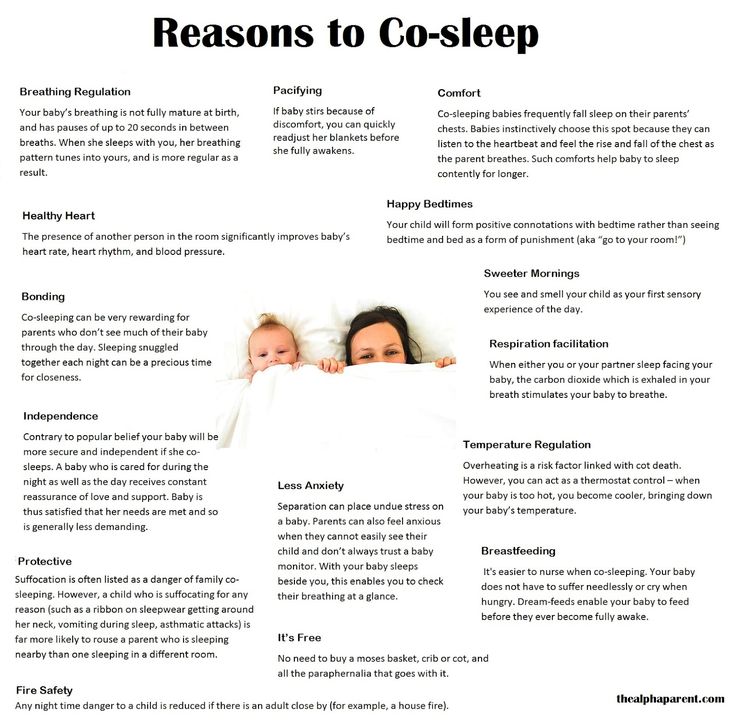
“The first four to six weeks are the hardest, but then things start to get better,” Cathy assures. It just needs to be experienced!”
The longer breastfeeding continues, the more benefits it brings, from saving on formula and improving sleep quality 11–13 to boosting your baby's immune system 14 and reducing your risk of certain cancers. 15
“When you feel like you're pushing yourself, try to go from feed to feed and day to day,” says Hannah, a UK mom. “I was sure I wouldn’t make it to eight weeks. And now I have been breastfeeding for almost 17 weeks, and I dare say it is very easy.”
Read the resource Breastfeeding Beyond the First Month: What to Expect
Literature
1 Naveed M et al. An autopsy study of relationship between perinatal stomach capacity and birth weight. Indian J Gastroenterol .1992;11(4):156-158. - Navid M. et al. , Association between prenatal gastric volume and birth weight. Autopsy. Indian J Gastroenterol. 1992;11(4):156-158.
, Association between prenatal gastric volume and birth weight. Autopsy. Indian J Gastroenterol. 1992;11(4):156-158.
2 Neville MC et al. Studies in human lactation: milk volumes in lactating women during the onset of lactation and full lactation .Am J Clinl Nutr . 1988;48(6):1375-1386. at the beginning and at the peak of lactation." Am F Clean Nutr. 1988;48(6):1375-1386.
3 Kent JC et al. Principles for maintaining or increasing breast milk production. J Obstet , Gynecol , & Neonatal Nurs . 2012;41(1):114-121. - Kent J.S. et al., "Principles for Maintaining and Increasing Milk Production". J Obstet Ginecol Neoneutal Nurs. 2012;41(1):114-121.
4 Australian Breastfeeding Feeding cues ; 2017 Sep [ cited 2018 Feb ]. - Australian Breastfeeding Association [Internet], Feed Ready Signals; September 2017 [cited February 2018]
- Australian Breastfeeding Association [Internet], Feed Ready Signals; September 2017 [cited February 2018]
5 Kent JC et al. Response of breasts to different stimulation patterns of an electric breast pump. J Human Lact . 2003;19(2):179-186. - Kent J.S. et al., Breast Response to Different Types of Electric Breast Pump Stimulation. J Human Lact (Journal of the International Association of Lactation Consultants). 2003;19(2):179-186.
6) Kent JC et al . Volume and frequency of breastfeedings and fat content of breast milk throughout the day. Pediatrics. 2006;117(3): e 387-395. - Kent J.S. et al., "Amount and frequency of breastfeeding and fat content of breast milk during the day." Pediatrix (Pediatrics). 2006;117(3):e387-95.
7 Lawrence RA, Lawrence RM.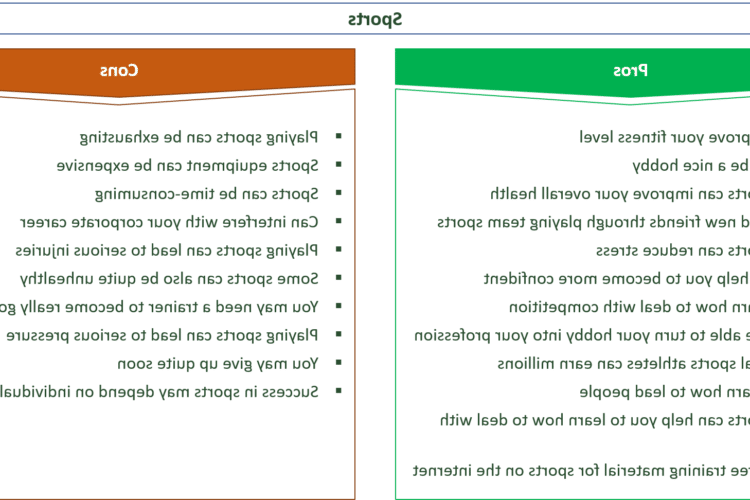 Breastfeeding: A guide for the medical profession. 7th ed. Maryland Heights MO, USA: Elsevier Mosby; 2010. 1128 p . - Lawrence R.A., Lawrence R.M., "Breastfeeding: A guide for healthcare professionals." Seventh edition. Publisher Maryland Heights , Missouri, USA: Elsevier Mosby; 2010. P. 1128.
Breastfeeding: A guide for the medical profession. 7th ed. Maryland Heights MO, USA: Elsevier Mosby; 2010. 1128 p . - Lawrence R.A., Lawrence R.M., "Breastfeeding: A guide for healthcare professionals." Seventh edition. Publisher Maryland Heights , Missouri, USA: Elsevier Mosby; 2010. P. 1128.
8 World Health Organization. [Internet]. Child growth standards; 2018 [cited 2018 Feb] - World Health Organization. [Internet]. Child Growth Standards 2018 [cited February 2018].
9 Australian Breastfeeding Association . [ Internet ]. Cluster feeding and fussing babies ; Dec 2017 [ cited 2018 Feb ] - Australian Breastfeeding Association [Internet], Cluster Feeding and Screaming Babies; December 2017 [cited February 2018].
10 Moberg KU, Prime DK. Oxytocin effects in mothers and infants during breastfeeding. Infant . 2013;9(6):201-206.- Moberg K, Prime DK, "Oxytocin effects on mother and child during breastfeeding". Infant. 2013;9(6):201-206.
11 U.S. Department of Health & Human Services [Internet]. Surgeon General Breastfeeding factsheet; 2011 Jan 20 [cited 2017 Feb] - Department of Health and Human Services [Internet], "Breastfeeding Facts from the Chief Medical Officer", Jan 20, 2011 [cited Feb 2017]
12 Kendall-Tackett K et al. The effect of feeding method on sleep duration, maternal well-being, and postpartum depression. clinical lactation. 2011;1;2(2):22-26. - Kendall-Tuckett, K. et al., "Influence of feeding pattern on sleep duration, maternal well-being and the development of postpartum depression." Clinical Lactation. 2011;2(2):22-26.
13 Brown A, Harries V. Infant sleep and night feeding patterns during later infancy: Association with breastfeeding frequency, daytime complementary food intake, and infant weight. Breast Med . 2015;10(5):246-252. - Brown A., Harris W., "Night feedings and infant sleep in the first year of life and their association with feeding frequency, daytime supplementation, and infant weight." Brest Med (Breastfeeding Medicine). 2015;10(5):246-252.
Infant sleep and night feeding patterns during later infancy: Association with breastfeeding frequency, daytime complementary food intake, and infant weight. Breast Med . 2015;10(5):246-252. - Brown A., Harris W., "Night feedings and infant sleep in the first year of life and their association with feeding frequency, daytime supplementation, and infant weight." Brest Med (Breastfeeding Medicine). 2015;10(5):246-252.
14 Hassiotou F et al. Maternal and infant infections stimulate a rapid leukocyte response in breastmilk. Clin Transl immunology. 2013;2(4). - Hassiot F. et al., "Infectious diseases of the mother and child stimulate a rapid leukocyte reaction in breast milk." Clean Transl Immunology. 2013;2(4):e3.
15 Li DP et al. Breastfeeding and ovarian cancer risk: a systematic review and meta-analysis of 40 epidemiological studies. Asian Pac J Cancer Prev . 2014;15(12):4829-4837. - Lee D.P. et al., "Breastfeeding and the risk of ovarian cancer: a systematic review and meta-analysis of 40 epidemiological studies." Asia Pas J Cancer Prev. 2014;15(12):4829-4837.
2014;15(12):4829-4837. - Lee D.P. et al., "Breastfeeding and the risk of ovarian cancer: a systematic review and meta-analysis of 40 epidemiological studies." Asia Pas J Cancer Prev. 2014;15(12):4829-4837.
Breastfeeding patterns - what to choose
- Polina Aleksandrovna, what is the difference between the modes of feeding children on breast, mixed and artificial feeding?
- The differences between breastfeeding from artificial and mixed clearly explain why feeding regimens differ.
- Normally, by what month should the feeding regimen be established?
- The diet is constantly changing. The older the child becomes, the larger portion of milk he eats, the smaller the frequency of feeding.
After childbirth, when the mother is lactating, the child also develops its own diet. In the first weeks, everything is quite chaotic and there is no regime as such, and the mother makes sure that the interval between breastfeedings is not more than 2. 5 hours (it can be half an hour or two hours) and the child does not remain hungry. From about the second or third week, the baby has more or less regular intervals between feedings. We can say that the regime has been established. But this mode gradually changes as the baby gets older.
- What is the benefit - and what harm can be from feeding by the clock?
pros
- The child knows when it's time to eat - the body adapts initially. It's no secret: certain enzymes are needed to digest food. When food enters the child's body regularly, his enzyme system and gastrointestinal tract adjust to the regime, and it is much easier for the child to digest food.
- A mode of wakefulness and sleep is being formed - at every minute of time, the child understands what will happen to him.
- Parents are not "hostages" of the baby, they have the opportunity to plan their free time - especially mothers, who always do not have enough time.
 The feeding regime and the regime of wakefulness and sleep make the situation very easy - at every moment the mother knows what awaits her.
The feeding regime and the regime of wakefulness and sleep make the situation very easy - at every moment the mother knows what awaits her.
Minuses
- Mom keeps a feeding schedule, but doesn't stick to a sleep schedule - and sets herself a trap. She can get into a situation where the baby is sleeping, and it's time to feed him. And it is not clear whether to wake the baby or let him sleep. If you choose a regimen, then it must be observed both in feeding and in laying down.
- There are situations when it is difficult to feed your baby on time (for example, you are far from home and you do not have formula). But it is worth foreseeing everything, and there will be no problems. You just need to be able to plan everything correctly.
- How to painlessly accustom a child to an hourly feeding schedule?
For a child, the regimen is not something painful, and if we build a clear daily routine, then, believe me, it becomes comfortable not only for the mother, but also for the baby. This is absolutely normal. But in order to build a regimen, you need to understand what it should ideally be - you must plan what intervals between feedings you want to come to.
The next step is to evaluate where you are right now. For example, you would like to make the interval between feedings three hours, but the baby eats every hour and a half. Of course, if you just suddenly start to pause between feedings at three hours, nothing good will come of it - it will be very stressful for the child.
Therefore, you need to act smoothly:
- determine point A, from which you are going, and point B, to which you must arrive;
- gradually adjust to the mode that we would like to have ideally.
Transition diagram
Now the breaks between feedings are 1.5 hours, and we want 3 hours. We add five minutes each time so as not to injure the child, and at some point we take a break not at 1.5 hours, but at 1 hour 35 minutes, then at 1 hour 40 minutes and so on. The amount of food will also change a little.
The amount of food will also change a little.
- If we talk about night feeding with an hourly schedule, is it necessary to wake the baby when it's time to eat?
- Night feedings are normal for a child up to a year old.
Newborn has no division of day into day and night - there are approximate three-hour cycles. He woke up - ate - slept, woke up - ate - slept. And so every day. For a newborn baby, night feedings are the absolute norm.
For 1 year old child Feeding 1-2 times per night will be normal. But a child of a year may not eat at night.
In order to understand whether it is worth waking up and feeding the baby, you need to know how much he eats per day. Each child at each age has a certain norm - the amount of food that he should eat per day (we always count not per day, but per day).
- If a child has eaten his norm during the day and sleeps at night, then he does not need to be awakened.

- If child for day ate about 70% of his norm , then at night it is advisable to wake him up and feed him.
We always evaluate nutritional adequacy by weight gain.
- If in one month a child gains weight and height within the norm for his age, then he receives enough nutrition.
- If a child does not gain weight and height , then he needs to be offered food more often at night so that he fits into the norm.
- If there are too many nighttime feeds on an hourly or on-demand basis, what to do about it?
- Night "snacks" do not always indicate the child's need for food. When a child asks for a breast at night, mothers mistakenly think that this is only hunger and nothing more. In fact, a child may worry at night due to a violation of the regime or the so-called negative association for sleep (when he can only fall asleep with a breast).
When there is no regime, the child "does not get enough sleep" of the daily norm and there is a so-called accumulated fatigue, his nervous system is in a very strong excitation. In such a situation, nightly feedings every hour often indicate that the baby has a violation of the regime - it is difficult for him to get up, his nervous system is overexcited, he physically cannot fall asleep without his mother's breast.
Such night feedings can be identified easily:
- the child wakes up every 40 minutes - 1 hour at night and asks for food, and during the day he usually eats every 3-4 hours - which means that he is unlikely to experience hunger;
- the child eats very little at night - he kissed the breast or a bottle, ate 10-20 g and fell asleep. This means that the baby performed a certain ritual: he waited for his mother, satisfied the sucking reflex, and thanks to this he fell asleep - in such a case, he did not have a goal to eat.

With these night feeds, you need to pay attention to two factors:
- Sufficiency of nutrition - it is worth making sure that the child receives the required amount of nutrition during the day, does not starve during the day and does not get at night the amount of food that should have been received during the day .
- Correct regimen - you need to make sure that the child is all right with the regimen, there is no accumulated fatigue and a negative association with sleep.
Is it normal for a child not to eat at night or to eat very little?
“This reverse situation may or may not be the norm. It all depends on the age of the baby and on whether he receives enough food in the daytime feeding.
Newborn
It is not normal for a newborn child not to eat at night, he must eat every 2.5-3 hours. When breastfeeding, this is critically important - for the mother to establish lactation, and for the baby to replenish the reserves that he needs.
An unpleasant situation can happen in the first couple of months - the mother is glad that the baby sleeps well and does not wake up at night, and on weighing it is clear that the child not only gained a little, but did not add at all in one month, that is, he is clearly starving.
Newborn babies have this feature: if they receive very little food, they do not have the strength to ask. Therefore, it is extremely important to ensure that a newborn baby eats both day and night!
Infant
A child older than 1.5-2 months adds weight and height within the normal range, eats all the amount of food he needs during the day, feels great, is not crying or irritated, and at the same time sleeps at night - let him sleep to his health. The most important thing is that he gains weight and height - these are the main indicators by which we can assess that the child has enough nutrition.
- If a mother prefers on-demand feeding, what is the most gentle way for her to organize it?
It is important to understand that one should not go to extremes.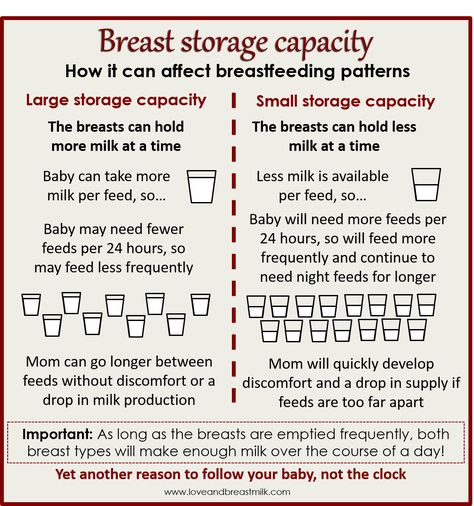
First extreme:
the child sleeps for a very long time, the intervals between feedings are 5-6 hours. It seems to mom that everything is fine, but weighing shows that the child is underweight. Mom waited too long and missed the moment when the child simply stopped asking for food due to exhaustion.
Second extreme:
A 7-month-old baby eats every hour, that is, about 20 times a day. This is, of course, an abnormal situation.
When we talk about feeding on demand, we mean that there is a certain interval between feedings. It varies depending on age:
- for a newborn baby it is about 2 hours;
- for a child older than 1 month - approximately 3 hours;
- closer to 4 months - 3-3.5 or 3.5-4 hours, each baby individually.
NORM - from 2 to 4 hours during the first year of a child's life, and you can deviate from this norm +/- for half an hour. If the intervals between feedings become very short (every hour) or very long (5-6 hours), we adjust them in order to stick to the norm and not go to extremes.
If the intervals between feedings become very short (every hour) or very long (5-6 hours), we adjust them in order to stick to the norm and not go to extremes.
- If a child eats little, but often enough, then what regimen is more relevant for him?
- Little, but often - this is not quite normal. It is important to observe the daily amount of food. If a child consumes a daily norm that he needs by age, and at the same time eats little, but often, it means that either the mother does not have enough milk for the child to eat more and, accordingly, withstand long intervals, or the child is simply already used to it - He can't eat more at one time. In both cases, you need to try to slightly increase the intervals.
We can feed both on demand and on schedule - there is no fundamental difference here. But most likely, if we stay on demand, the baby will continue to feed every hour and his amount of food at a time will be quite small for his age. Therefore, you need to try to maintain a slightly longer interval between feedings and watch how much he will eat.
- There are situations when a child's regimen is disturbed for some reason - allergies, gastrointestinal upset. How soon can you return to your normal routine?
- By and large, the sooner you return to normal mode, the better. Do not worry too much if the child does not eat for several days according to the regimen, this will not affect your condition or the physical condition of the baby in any way. The most important thing is not through force and not aggressively, but very gently to return the child to the regime that he had. The clearer and longer the regime was, the easier it is to return to it.
— Why is it important to observe the feeding regimen?
— It is important to observe the feeding schedule:
- For parents — so that the mother is not a “hostage” of the child and understands what will happen in the near future, could plan something or leave the house. This, it would seem, is not so important for the child, but it is important for the general climate in the family, so that the mother feels relatively free, not “tied hand and foot” to her baby.

- For a baby, I am always for the regime and I always urge parents to comply with it, because for a child everything should be predictable - he gets used to the order, is drawn into the regime and feels as comfortable as possible. Parents are comfortable when they know what will happen to them - and the baby is much easier when he knows that food or sleep is on schedule - his body begins to adjust accordingly.
- In what cases can you move away from the usual feeding regimen?
- If you can not deviate from the regime, then it is better not to deviate. But if this happened, do not worry, do not blame and do not reproach yourself, nothing critical will happen, even if the child does not eat according to the regimen for a couple of days. Just get back to your routine as quickly as possible and you'll be fine.
- Polina Alexandrovna, please give examples of the feeding regimen and daily diet for babies of different ages.
— There are a few things to consider when planning your baby's feeding schedule and diet.
- The amount of food that the child should receive per day.
Many mothers, unfortunately, mistakenly believe that the daily volume depends only on the age of the baby. But there is no universal portion, it is more in line with the weight of the baby. So, two children of the same age, but of different weights, will need different amounts of food per day. Therefore, it is quite difficult to find clear instructions on how many milliliters at a time a child should eat in each case.
- Feeding frequency.
In order to calculate the amount of food at one time, you need to know how much food you need per day and how many times the mother will feed the baby - that is, the frequency of his feedings. In this case, you should always focus on children's weight. I recommend scheduling meals with your pediatrician so that everything is tailored to your child's specific needs.
- for a 2-month-old baby - 6-7 times a day and +/- 120-150 ml of breast milk eaten per feeding,
- for a child 5-6 months - 5-6 times a day +/- 180-210 ml of breast milk eaten per feeding,
Feeding babies have larger servings, depending on weight and frequency of feedings.


